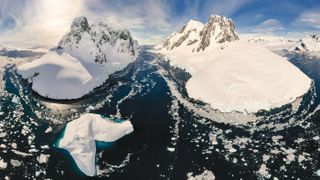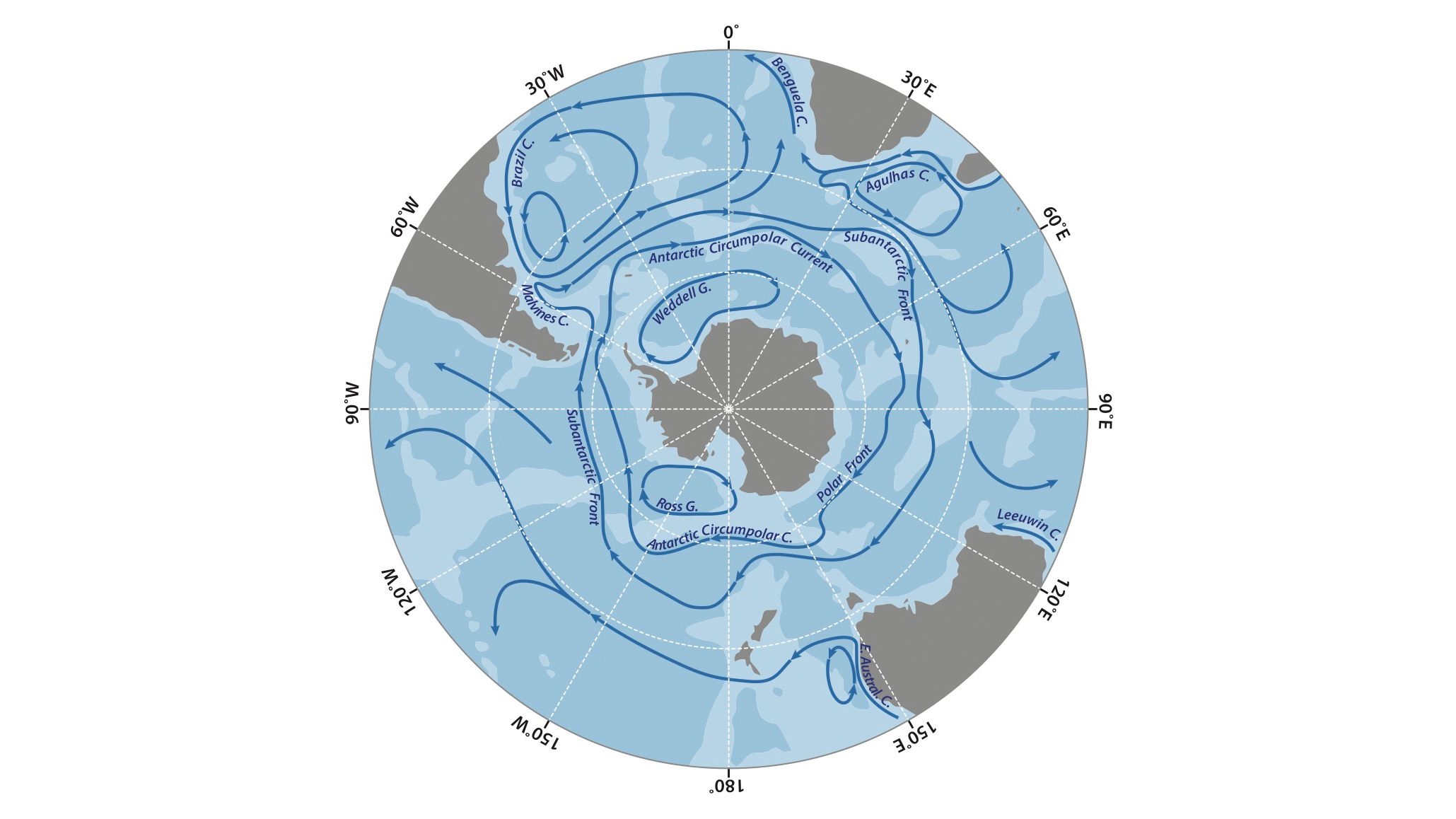what did the southern ocean used to be called
Globe's fifth ocean merely confirmed

The Earth has finally attained popular recognition for its fifth ocean, with a determination by the National Geographic Gild to add the Antarctic ocean around Antarctica to the four it recognizes already: the Atlantic, Pacific, Indian and Arctic oceans.
Although the designation of the frigid waters around the icy southern continent equally a split up ocean has kicked effectually for almost 100 years and is widely used by scientists, until now it has not had popular backing.
But on June 8 — Earth Oceans Twenty-four hour period — the society announced it would henceforth be labeling the Southern Ocean every bit the 5th ocean on its maps of our planet.
Related: See photos of Antarctica: The ice-covered bottom of the globe
"The Southern Ocean has long been recognized by scientists, merely because there was never agreement internationally, nosotros never officially recognized information technology," the order's official geographer Alex Tait told the National Geographic website. "Information technology's sort of geographic nerdiness in some ways."
One of the biggest impacts would exist on pedagogy, he said: "Students learn information about the ocean globe through what oceans y'all're studying. If you don't include the Southern ocean, then you don't learn the specifics of it and how important it is."
Antarctic current

National Geographic began making maps in 1915, only the social club had but formally recognized merely four oceans, which they defined by the continents that bordered them.
In contrast, the Southern ocean is defined not past the continents that surround it, simply by the Antarctic Circumpolar Current (ACC) that flows from west to east. Scientists think the ACC was created 34 one thousand thousand years ago when the continent of Antarctica separated from Southward America, assuasive water to menses unimpeded effectually the "bottom" of the world.
Today, the ACC flows through all waters that surround Antarctica until nigh sixty degrees south, except for the Drake Passage and the Scotia Body of water, which are both roughly betwixt South America's Cape Horn and the Antarctic Peninsula.
The waters of the ACC — and therefore most of the Southern Ocean — are colder and slightly less salty than the ocean waters to the due north.
The ACC pulls in water from the Atlantic, Pacific and Indian oceans to help drive a global "conveyor belt" that carries heat around the planet, while the cold dense water of the ACC sinks and helps to store carbon in the deep body of water. And thousands of marine species live merely inside the ACC, according to National Geographic.
Antarctic waters
Exactly what constitutes an ocean is not agreed, other than that they are the largest bodies of h2o. A common definition split the global ocean into four or five parts, according to the continents that surrounded them.
All the same, the term "Southern Body of water" had been used to draw the waters at the bottom of the world since they were showtime seen past the Castilian explorer Vasco Núñez de Balboa early in the 16th century, and its use connected as oceans became vital routes for international communications and merchandise in the centuries that followed.
Past the 19th century, many maritime nations had established "hydrographic" authorities to publish data on the oceans for their navies and merchant vessels, and the term "Southern Ocean" appeared in the early on publications of the International Hydrographic Organization (IHO) that they formed in 1921.
Only co-ordinate to the book "Southern Ocean: Oceanographers Perspective" (Ice Press, 2015), the IHO rescinded the designation in 1953: "The bulk of opinions received … are to the effect that there exists no existent justification for applying the term Body of water to this trunk of water," the IHO wrote in the guidelines information technology published that year.
Scientists didn't concur, however, and the term has been increasingly used, as the importance and uniqueness of the Southern Ocean became more clear. The U.S. Board on Geographic Names started using it in 1999, and the National Oceanic and Atmospheric Administration (NOAA) officially began using it this year.
The original "ocean" on Earth was, in fact, a river — named by the ancient Greeks subsequently the titan Oceanus, a river god who was the son of Uranus and Gaia and the brother and husband of Tethys, the goddess of the fundamental waters that nourished the Earth. .
This river "Bounding main" was originally thought to encircle the globe, which the early Greeks imagined concluded somewhere but west of Europe and eastward of Asia. Eventually, the term would go used to describe the different parts of the global body of water.
The related term "Seven Seas," meanwhile, is much older than many mod oceans. No one knows where the concept originated, simply the term appears in the ancient writings of the Greeks, Romans, Arabs, Hindus, Persians and Chinese, although it often described entirely different seas — some of them mythical — for dissimilar people.
Co-ordinate to the World Atlas website, the Seven Seas today are considered the seven largest oceanic bodies of water: the Arctic, N Atlantic, South Atlantic, Indian, North Pacific, South Pacific, and Southern or Antarctic Sea
Originally published on Live Science.
Source: https://www.livescience.com/earth-fifth-ocean-confirmed.html
Post a Comment for "what did the southern ocean used to be called"